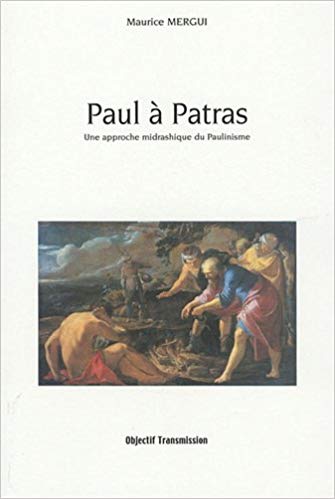I am beginning to suspect that Nanine Charbonnel’s book on the Christ Myth theory is really something quite different from any other argument for the Jesus of the gospels having been a figure crafted entirely out of “revelation”, especially “revelation” through the Jewish Scriptures. So far I have steadily worked my way through the first part of the book in which NC presents a wide range of ways Jewish scribes of the Second Temple era wrote and interpreted their sacred books. Having since read NC’s introduction to the second part of Jésus-Christ, Sublime Figure de Papier I have begun to glimpse the relevance of all of that unexpected introduction.
 I’ll save the big guns for later, but here is something, or just a morsel of something, that I picked up through beginning to read one of the works in NC’s bibliography. It’s another book in French (so again, it’s not one I can read quickly or even skim) —
I’ll save the big guns for later, but here is something, or just a morsel of something, that I picked up through beginning to read one of the works in NC’s bibliography. It’s another book in French (so again, it’s not one I can read quickly or even skim) —
- Mergui, Maurice. 2009. Paul à Patras Une approchemidrashique du Paulinisme. Paris: Objectif Transmission.
What Do We Mean by Midrash?
Let’s first get the term midrash out of the way. Here I fall back on the simplest explanation of the word used by a Jewish scholar of some note, Daniel Boyarin:
Although a whole library could (and has been) written on midrash, for the present purposes it will be sufficient to define [midrash] as a mode of biblical reading that brings disparate passages and verses together in the elaboration of new narratives. It is something like the old game of anagrams in which the players look at words or texts and seek to form new words and texts out of the letters that are there. The rabbis who produced the midrashic way of reading considered the Bible one enormous signifying system, any part of which could be taken as commenting on or supple menting any other part. They were thus able to make new stories out of fragments of older ones (from the Bible itself), via a kind of anagrams writ large; the new stories, which build closely on the biblical narratives but expand and modify them as well, were considered the equals of the biblical stories themselves.
(Boyarin, The Jewish Gospels, 76)
That won’t satisfy certain purists and it does conflict with my most recent posts on the term but I’m also a believer that words mean what we mean them to mean and if we can all accept for the sake of argument the use of a term for a particular purpose then we are removing an unnecessary barrier to getting a discussion under way. (Boyarin’s is also a definition that NC herself references.)
Paul’s Career Began in Scripture
Again, I emphasize I am not presenting here a full argument but merely a small detail of a much larger presentation. (I have read no more than 2% of the Kindle version of Mergui’s book.)
Paul, we all know, was originally called Saul, according to the Book of Acts.
Saul, pronounced closer to “shawl” in Hebrew, is based on the King Saul of the books of 1 and 2 Samuel.
Saul was a persecutor of the church. He bound the men and women of the Christian faith (Acts 8).
Where did that biographical detail originate? It is not in Paul’s letters: if in doubt see Paul the persecutor? and Paul the Persecutor: The Case for Interpolation. Continue reading “Paul as a Midrashic Creation”
